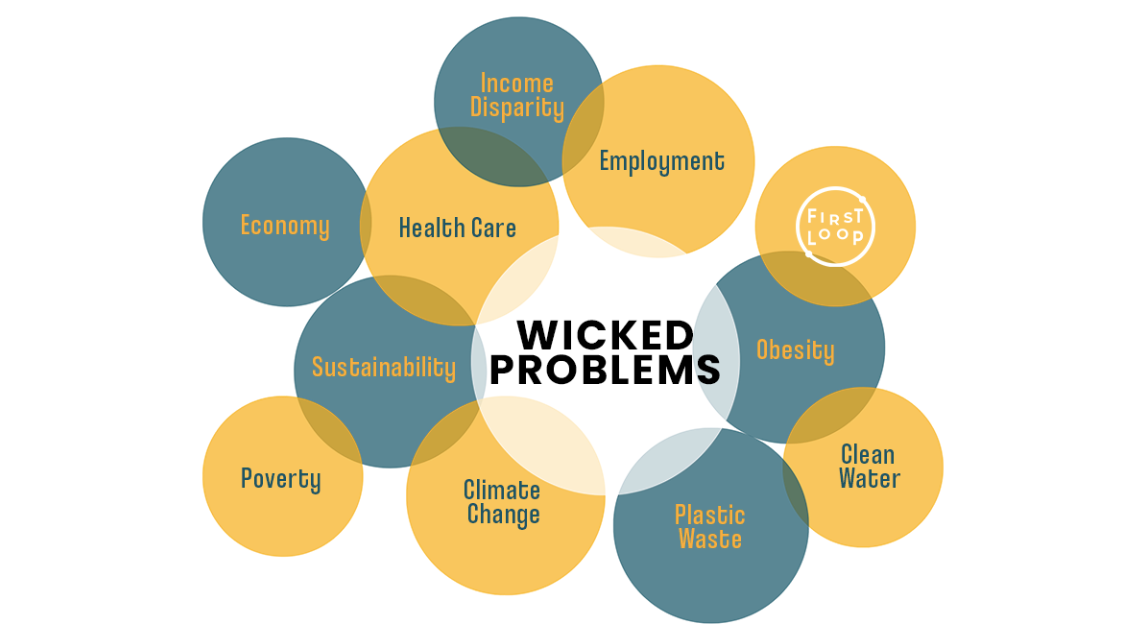Wicked Problems in Modern Cities
A problem is a matter or situation that people is able to think of approaches to solve it. Unlike problem, a wicked problem is a social or cultural issue that is difficult or impossible to solve due to its complexity. Why is wicked problems complicated? This is because wicked problems always subject to limitations of the physical world, such as lack of consistent knowledge, the huge amount of people and points of views, the significant financial burden, and the interconnected nature of these difficulties with other concerns (Wayne, 2023). For example, those defined as classic wicked problems include poverty, climate change, education design, homelessness and sustainability. These problems have no specific steps or rules for solving them, and solutions for them are either good or bad rather than right or wrong. When starting to solve a wicked problem, the participants involved do not have chance to learn through trial or error in the solution process. Therefore, every solution to wicked problems can be said as a “one shot operation”, and the participants must take full responsibility for their actions and has no right to make mistakes (Wong, 2021).
Our wicked problem : City Mobility
As urban populations rise and transport networks become more congested, guaranteeing efficient and sustainable city mobility becomes a challenging problem. Rapid urbanisation, technology improvements, and changed societal choices are changing how people move throughout cities (Owens, 2019).
Problem Definition:
How can we restructure transportation systems and
infrastructure to promote equitable and ecologically sustainable mobility for
all citizens in an ever-changing metropolitan landscape?
Pain Points
According to user surveys and interviews conducted by
Catarina Ramos (2022) with a total of 72 respondents, it is known that:
· 55.6%
travel within a city every day.
· 66.7%
live in the city.
· The
most common modes of transportation were car, metro/tram, and walking.
·
Their main worries while travelling in the
city were safety, affordability, and distance.
Storyboard
Solutions
The relationship between the metropolis and rural
areas is transforming and moving around the city nowadays that causes witnessed
transformation in our country for the past few years. Therefore, how might we
organize the variety of people navigating the streets to provide a more
efficient and cleaner city? To reduce the reliance on private vehicles from
citizens, the government should invest in public transport infrastructure by
developing efficient, reliable, and extensive public transportation networks. For
instance, growing the current public transportation network, streamlining bus
routes, and combining various public transportation options as the city of Pris
plans to add 180km of segregated bicycle lanes and triple the number of bike
parking spots throughout the city (Riccardo Boin, 2023). Not only that,
carpooling was also one of the solutions for city mobility. Carpooling has many
positive effects on the environment and even society at large because it allows
individuals to save money on gas, lessen traffic, and emit less carbon dioxide.
For instance, it's quite simple to use Uber in a place like Los Angeles to
share a car trip with others to the same location, which is less expensive and
better for the environment (Charlie Fletcher, 2023).
Pollution, deforestation, and biodiversity loss in
urban cities all have major effects for public health, quality of life, and the
environment. First, we have to stop deforestation, which is critical to our
biological system. We cannot cut down or burn trees because they store
greenhouse gasses, provide oxygen, and provide a natural habitat for a variety
of plants and animals that would be threatened if these forests were destroyed
(Fahad & Fahad, 2020). Furthermore, governments should promote green
infrastructure and urban greening programs to boost biodiversity, reduce heat
island effects, and improve air and water quality(Rinkesh, 2022) . Finally, we
can reduce waste by being more efficient with our personal items and food. If
we want to get away of an item that's old but still usable, we can give it a
new look or use it differently. Increase waste management strategies, such as
recycling, composting, and trash reduction, to minimize pollution and
resource consumption.
References
Fahad, & Fahad.
(2020, October 18). How to control environmental degradation? Earth Reminder. https://www.earthreminder.com/how-to-control-environmental-degradation/#google_vignette
Rinkesh. (2022, July 27).
Causes, effects and solutions to environmental degradation - Conserve Energy
future. Conserve Energy Future. https://www.conserve-energy-future.com/causes-and-effects-of-environmental-degradation.php
Boin, R. (2023, March
27). Solutions for smart mobility in urban areas | McKinsey. https://www.mckinsey.com/industries/travel-logistics-and-infrastructure/our-insights/infrastructure-technologies-challenges-and-solutions-for-smart-mobility-in-urban-areas
Fletcher, C. (2023,
September 5). 8 Sustainable Transport Solutions to Improve Mobility in the US.
Earth.org. https://earth.org/8-sustainable-transport-solutions-to-improve-urban-mobility-in-the-us/
Owens, D. (2019, January
28). UX case study - wicked problems. Medium. https://medium.com/@denizowens/ux-case-study-wicked-problems-a7bddcf6dfa2
Ramos, C. (2022, February
13). City mobility: The wicked problem. Medium. https://medium.com/@catarina.ramos/city-mobility-the-wicked-problem-2222fb22954a
Wayne, S. (2023, November
21). Wicked Problem | Definition, Characteristics & Examples. Study.com. https://study.com/learn/lesson/wicked-problem-overview-characteristics-examples.html
Workload
|
Name |
Task |
|
ERIN CHUNG SHING (TP070387) |
Problem Definition |
|
GOO MAY SHYN
(TP070055) |
Problem Definition |
|
CHONG PEY SHAN
(TP070414) |
User Persona |
|
LEE WAN CHIEN
(TP070220) |
Storyboard |
|
FOO JING SZE
(TP070845) |
Solution |
|
CHUAH XIN YI
(TP070340) |
Solution |
|
ALL MEMBERS |
References |


Comments
Post a Comment